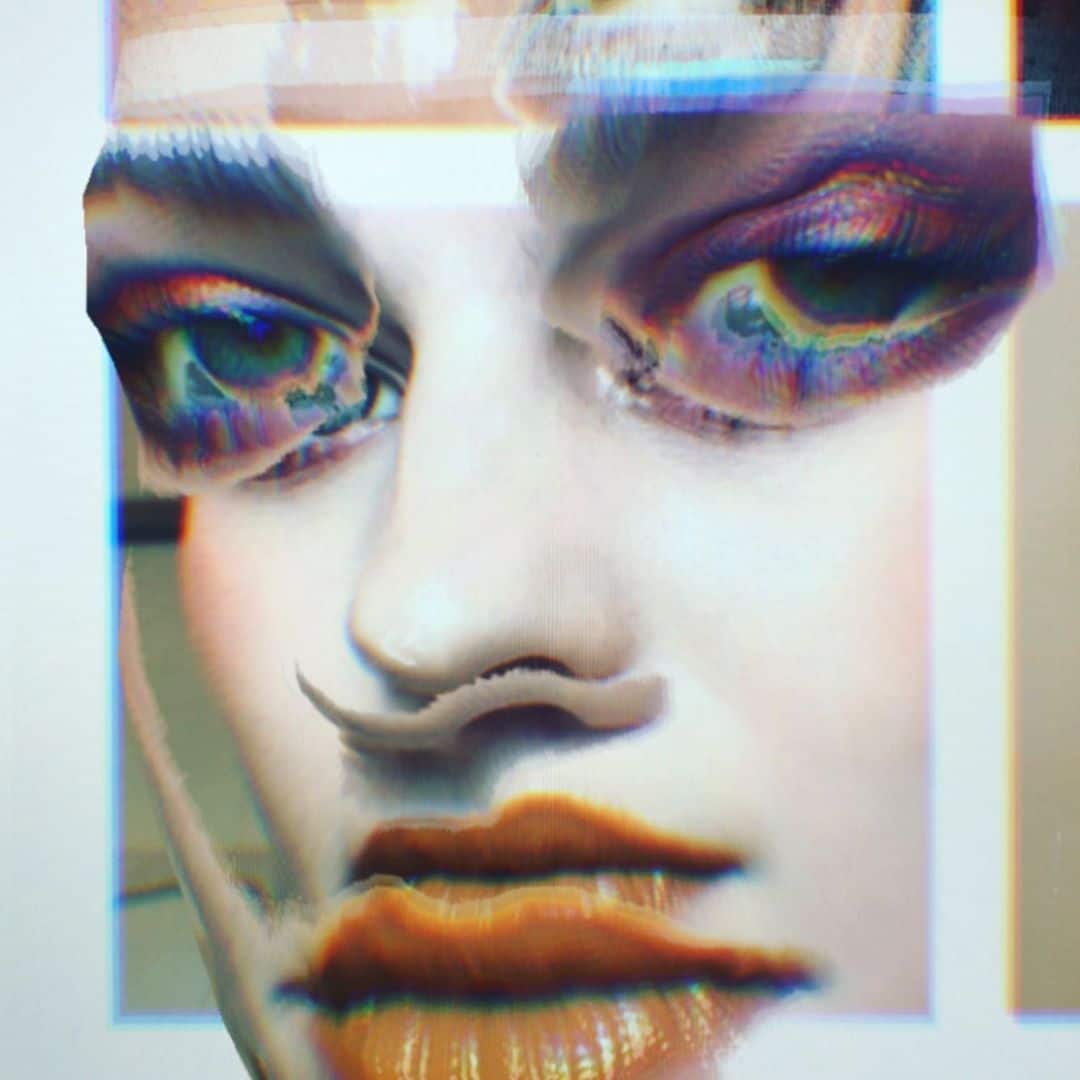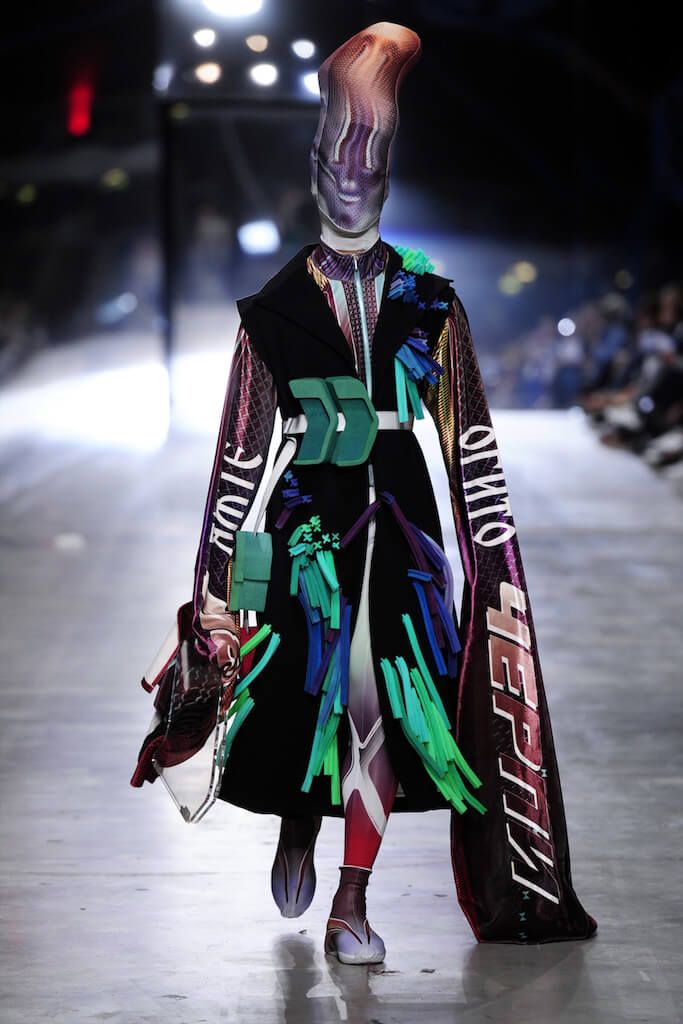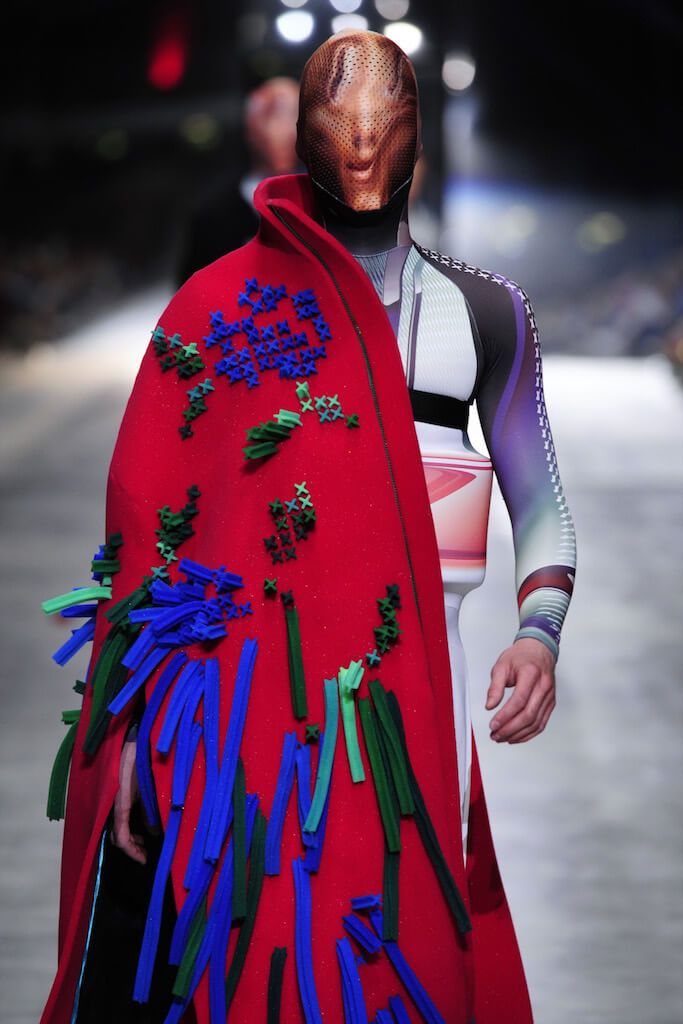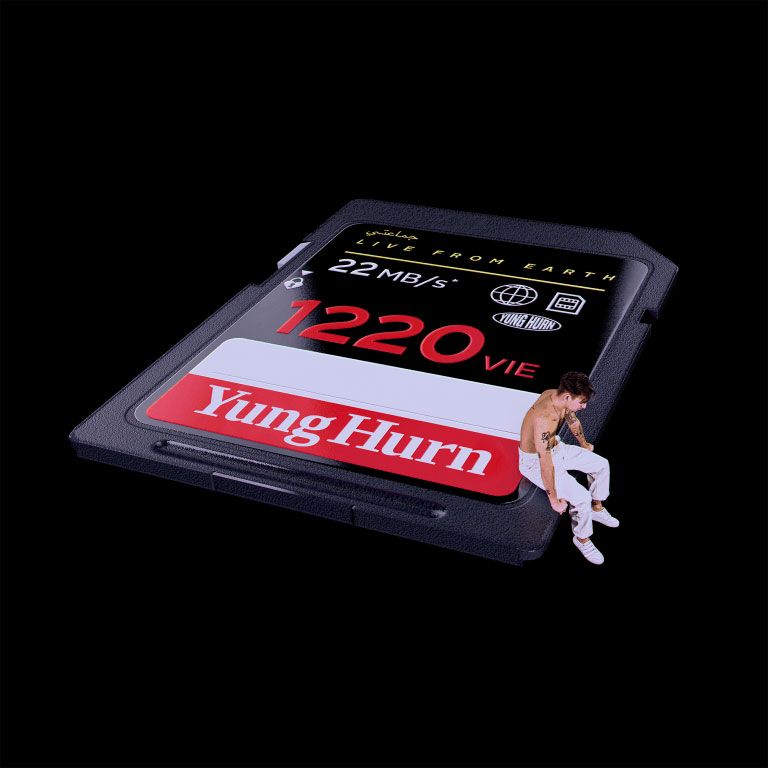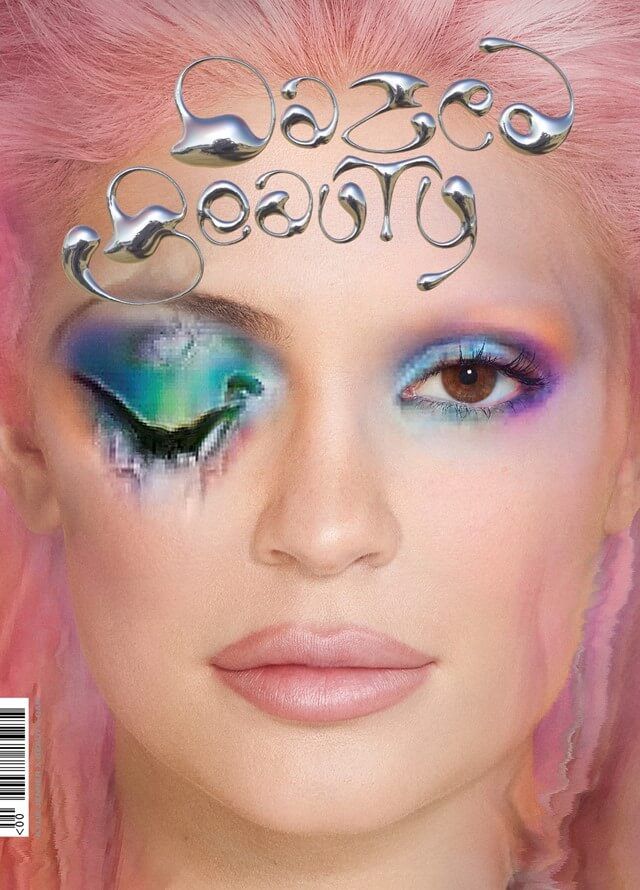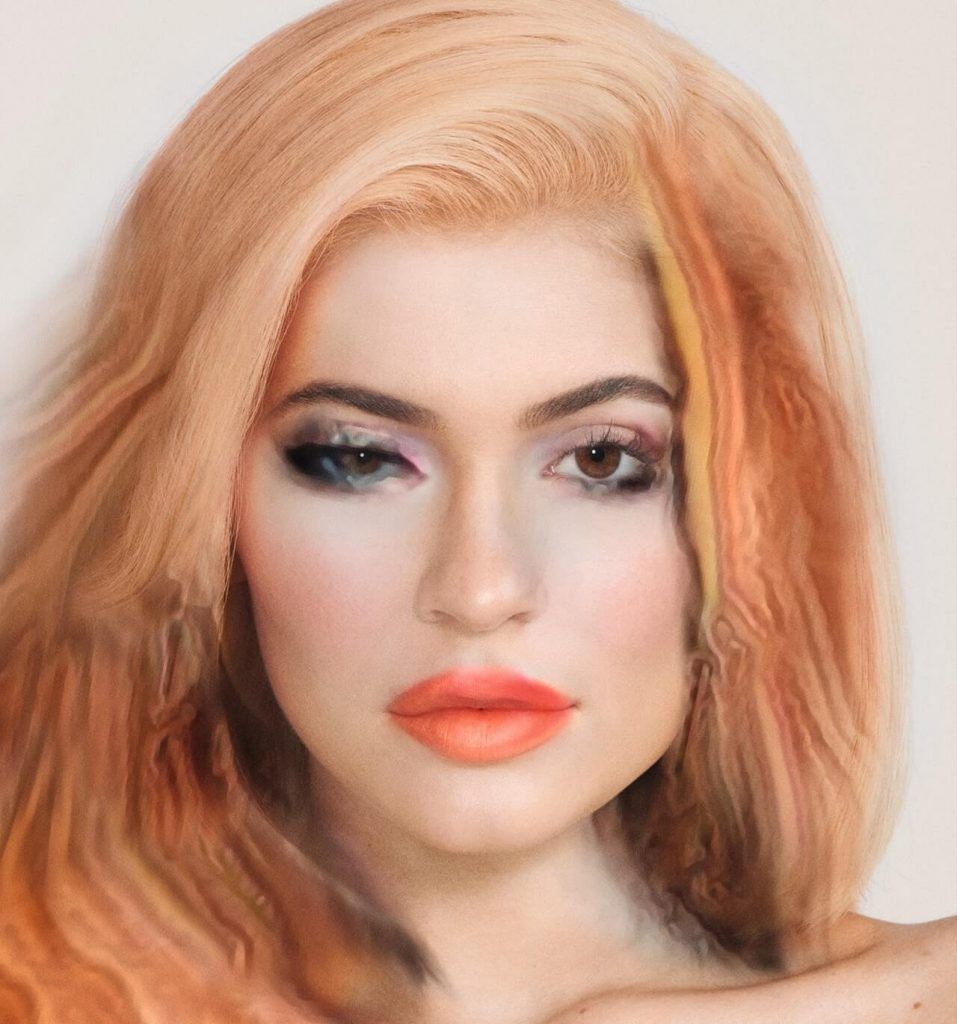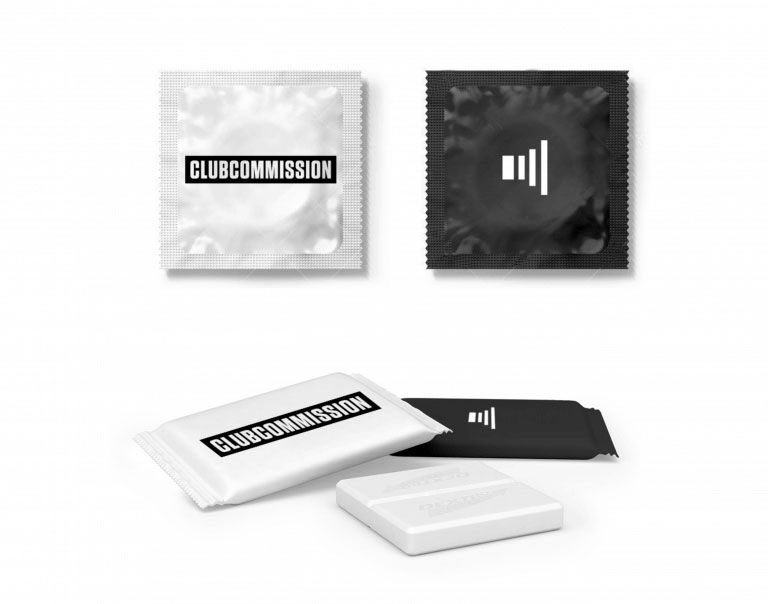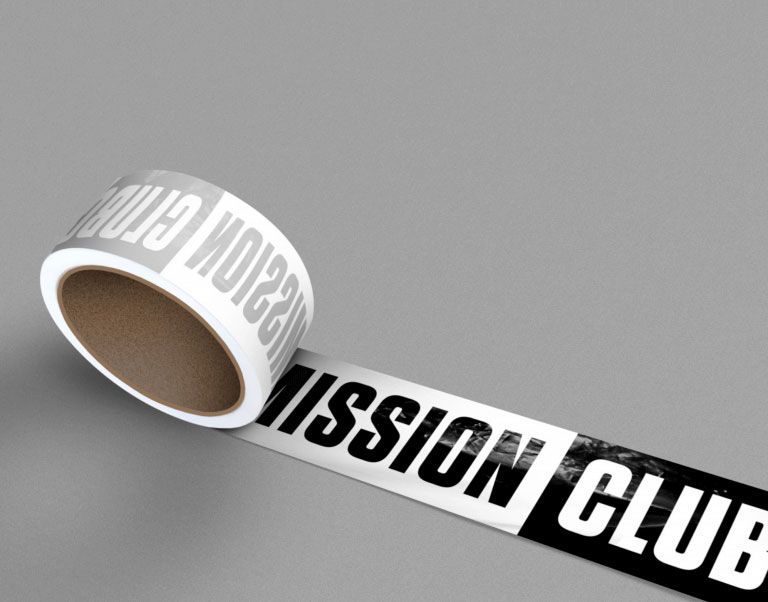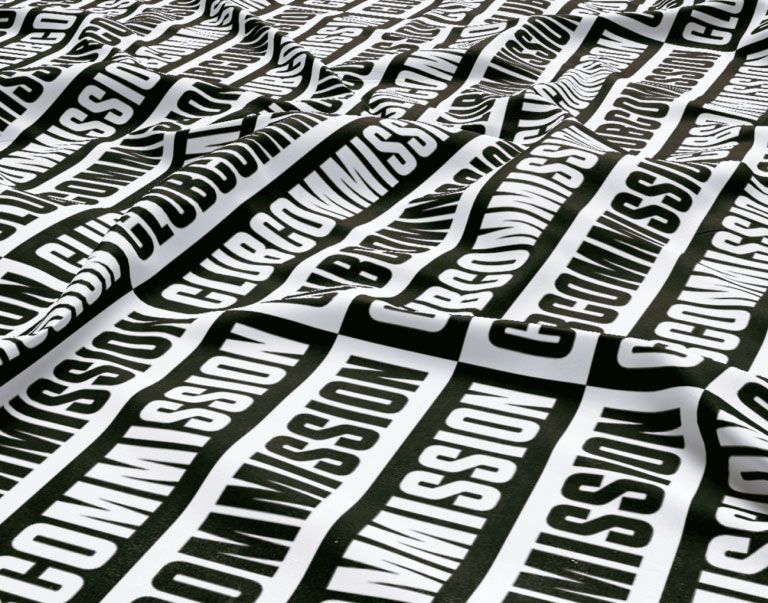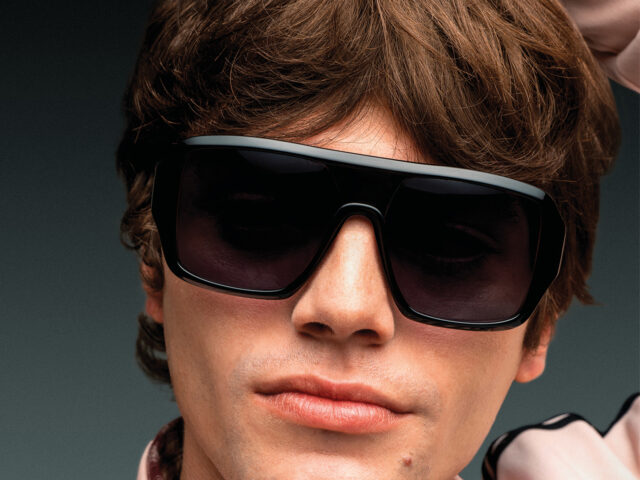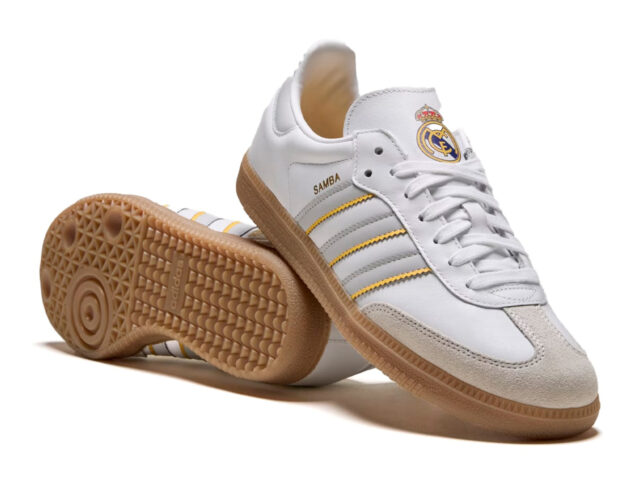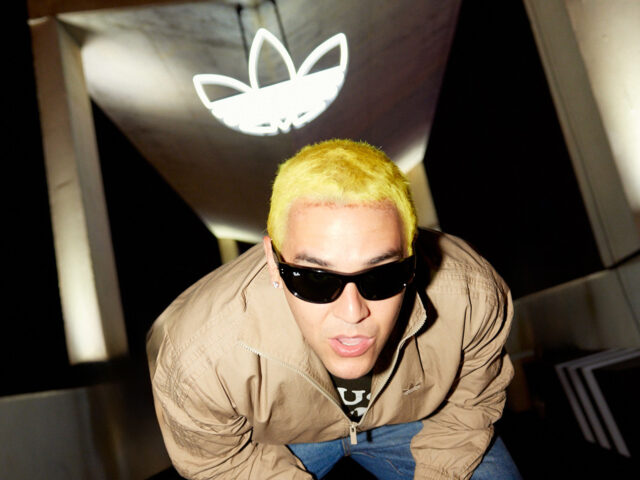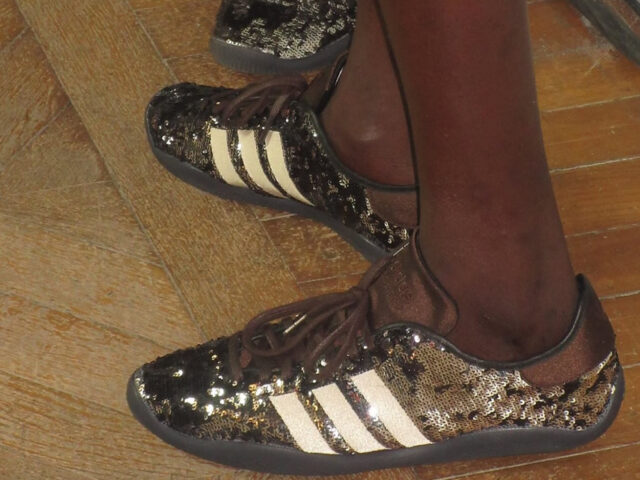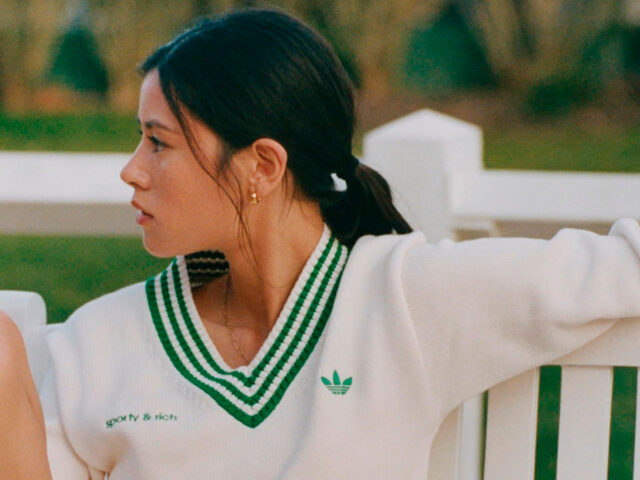The design studio Selam X has bathed the visual culture in virtual codes that have distorted the creative scene 6.0 globally. Their projects created by the Berlin-based gaming team x have positioned themselves, from anonymity, behind the digital revolution.
Selam defines a showcase in which to buy from creative directions to visual identities, animations, web designs or digital works, among which augmented reality or artificial intelligence are highlighted as key elements. That graphic universe that challenges creativity has connected with the fashion, music, art and beauty industry to carry out proposals that are designing the future.
His background reflects the real marriage between technology and art through exciting work such as animations for streetwear brands like Nike or adidas, visuals for C. Tangana shows, as well as shows his infinite power of visualization in the creation of Kylie Jenner’s AI cover based on his BeautyGAN algorithm.
We talked to the digital hackers (@selamxstudio) about -among many other things- the technological revolution in fashion and beauty, beyond our obsession to live another parallel reality through Instagram filters.
H.- How was Selam X born? Explain your concept in a tweet.
Selam X – When we started is not important. It is important that we started to do our own thing! Growth mindset is essential, and a feeling for community. Together we are better. The real power is people. Selam means Hello in turkish and X is the Unknown. We come from X and we go to the X.
H.- You’ve digitized several sneaker campaigns for brands like adidas, Nike and Puma. What connection do you think there is between your vision and the streetwear industry for such a synergy to succeed?
SX –Every brand which wants to stay relevant has to constantly reevaluate their methods of communication. Not only in terms of content but also from a visual standpoint. We are very aware of the current state of visual communication and how we can fit into this and also help to push it into other directions. We believe that this is what clients love about us.
H.- We loved the visuals you did for the C. Tangana tour in 2019. How did the collaboration with Pucho come out and what elements were essential in the graphic creation of his imaginary?
SX – This collab was powered by Silvia Bianchi. She trusted us and showed us the Spanish music scene. The art direction and animation for C. Tangana’s show were made closely with her and the whole Pucho’s team. We created the visuals for the full show, generating almost one hour of video content. Our international network of artists and designers were cooking 24/8, building massive 3D artworks and endless visual effects for each moment. It was a non-stop ping pong of content exchange in one month of production time.
The original stage setup consists of a 30m2 LED wall split in two horizontal stripes with a pedestal in between and of course it has some variation depending on the festivals and some gigs. Everything we’ve proposed were also supervised by Pucho, Kigo, Alex and Javier.
Working with one of the top Spanish speaking artists was superb. C. Tangana is beyond the traditional cars, money, fame and trap aesthetic. A maximum artistic freedom is the key for Selam X.
H.- Your studio is largely focused on 3D fashion projects like the one you did for XIMONLEE SS19. What role is technology playing in new age fashion? What are its sustainable advantages?
SX – Technology might not be the salvation in terms of sustainability we hope for, as for example this map (Anatomy of an AI system) suggests. I think at maximum we’re working with a lesser evil in the future.
On the other hand, in an ideal world technology enables people to re-think their society’s models (of production) and push for a democratisation of tools – which makes technology itself all the more desirable and interesting for brands and corporates as well. There will always be this incredible amount of promises being made.
H.- The music industry has also been very present in your portfolio. The animation for Felix Snow’s feat. Lil Uzi Vert clip or the creation of the cover artwork and visual identity of Yung Hurn exemplify your challenge to creativity. What do you think the new music scene is looking for in Selam X?
SX – For a lot of our members, working for or with musicians was an early goal in their professional life. (Also about 91% of the people at SX have some kind of background in music) What we learned over the first years was that there is not one music industry but a whole range of industry models that are seemingly disconnected from each other. Some of them offer more creative freedom and actual time spent with the musicians you are creating for/with. Others are pretty much cliché top-down management factories.
We are also kinda happy that recently musicians have been actively reaching out to us because they connected with what we do, convincing their (often way older) management to work with us for their videos etc. S/O 2013-2017, much love ٩(̾●̮̮̃̾•̃̾)۶
H.- I’m amazed that a robot could create outfits with just one click, like James Barrat’s for Balenciaga, and that your Beauty_GAN algorithm did Kylie Jenner’s makeup. Could that be the future of fashion and beauty? Can machines kill our creativity?
SX – It’s definitely the future of fashion and beauty, it’s the future of everything. AI in art is just learning to walk. There’s no threat to human creativity, i’d worry more about autonomous predator drones. Become more creative, then.
It’s definitely the future of fashion and beauty, it’s the future of everything. AI in art is just learning to walk. There’s no threat to human creativity, i’d worry more about autonomous predator drones. Become more creative, then.
H.- How would you explain to an ordinary person the creative process of BEAUTY_ GAN? Why, being a beauty filter, the result is anti-aesthetic?
SX – When we started working on BeautyGAN, we approached it with the mindset that art and science are naturally linked through culture. The cultural root of AI research is people’s data – many of the data sets used in computer science today are scrambled from Flickr or Twitter – which is used to train algorithms in (for example) distinguishing dogs from cats.
To achieve this, a neural network needs to gain an understanding of the broader concepts of »cat« and »dog«, which are impossible to describe in a programming language but can still be learned by algorithms, given enough data. With that in mind, we wanted to see if we could teach a machine to recognise beauty. We collected a dataset of 17k images tagged »beauty« from Instagram.
Neneh Opheim supervised the process and made sure to assemble data with diversity in mind, including the full spectrum of ethnicities, colors, genders and ages. The algorithm we trained with it is called a discriminator, which given an image it describes mathematically how much it differs from the whole of pictures it has seen before and can therefore place a bet on whether it belongs to the data set or not.
H.- Let’s talk about the artificial beauty and role it has acquired in 2020. Why do we are obsessed in living another reality through filters and algorithms?
SX – Claudia Rafael together with Moritz Tontsch just opened their exhibition titled “Beauty in techno-expressive times” and launched the paper they wrote together with Futurologist Ludwig Engel on this topic. With technology we can alter the digital appearance of our bodies, which enables us to develop more personal and abstract interpretations of our physical selves. Using technologies to change circumstances, which are dictated by nature towards an individual approach to beauty has a huge emancipatory potential for self-realization.
Digital tools and resources to learn how to use them never have been more available as they are today. The easy accessibility of tools like Augmented Reality opens up the possibility to develop a novel approach on beauty. Using these tools in a emancipist way will free what is considered beautiful from the current social norm.
Virtual beauty is as real as physical beauty. The way we experience beauty in virtual realities is influencing us as much as experiencing beauty in the physical world.
Otherness = Beauty. The socially accepted norm of “beauty” is being substituted by strategies to become different. Alienation is used as potential for distinction thus turning socially normed otherness into a new way to create a differentiated beauty. Augmented Reality enables the relief of YOUR idea of beauty that lives in YOUR body and mind.
The naturalistic approach on beauty is over. While in the age of the natural, beauty was altered only to the amount to which it still seemed biological plausible. It was claimed that you look the same way you look in the virtual world as you look in the physical world. In techno-expressive times, altering beauty with the help of technology gets more expressive and digital bodies get more and more alienated from physically possible forms.
H.- Having the infinite power of visualization, if you are already designing the future, what is the next step?
SX – We are constantly thinking/talking about ideas regarding the new possibilities for Digital Fashion and the next steps for (Digital) Avatars in a post-apocalyptic deep-fake-news-moloch. But still: the future belongs to those who plan today.
Sigue toda la información de HIGHXTAR desde Facebook, Twitter o Instagram
You may also like...
